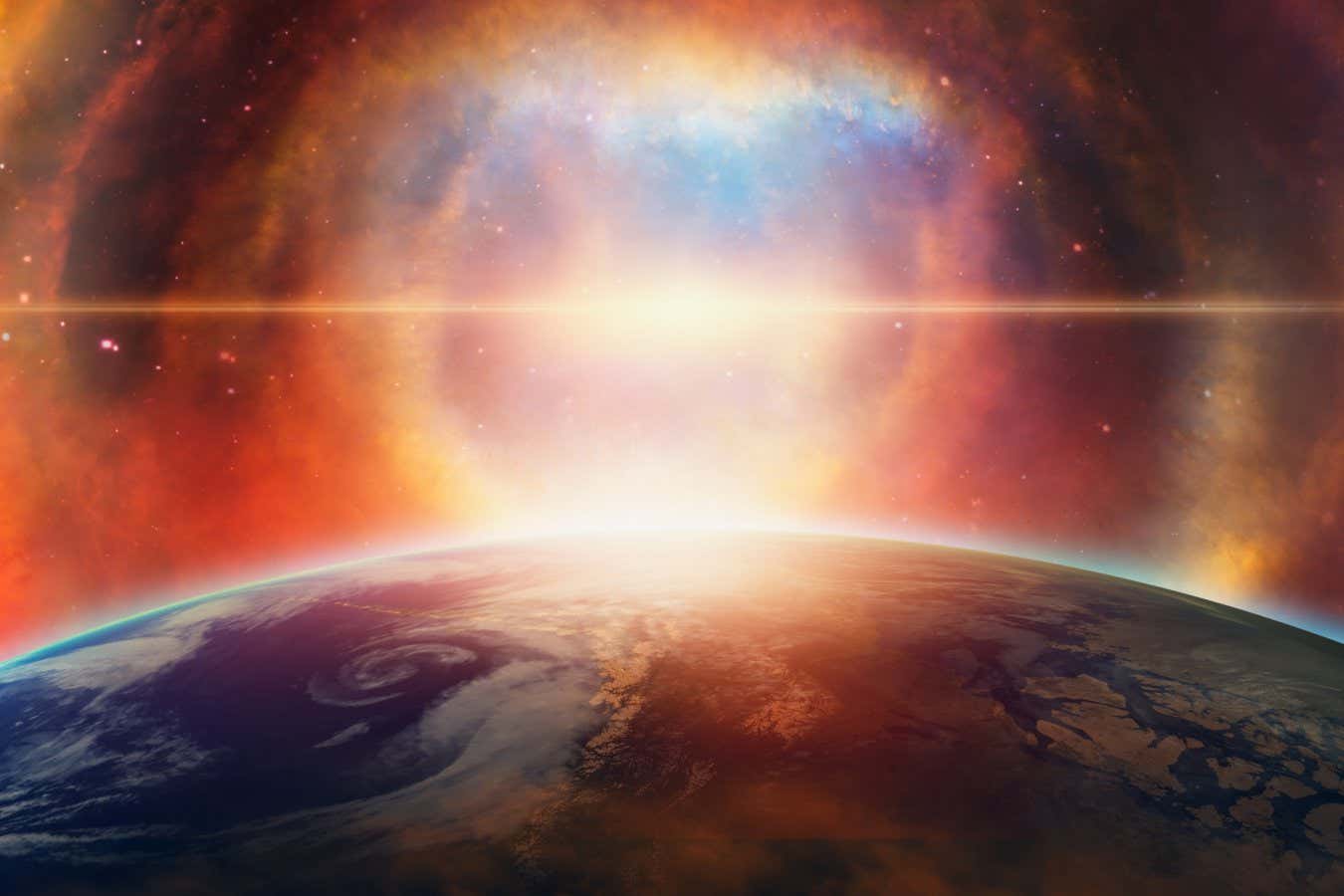
A supernova could have sent cosmic rays hurtling at Earth
muratart/Shutterstock
An exploding star may have sent cosmic shrapnel flying to hit Earth 10 million years ago, and astronomers have now narrowed down the most likely culprits behind this interstellar incident.
Earlier this year, Dominik Koll at the Helmholtz-Zentrum Dresden-Rossendorf in Germany and his colleagues discovered a spike of radioactive beryllium buried in metallic rocks 5 kilometres beneath the Pacific Ocean, which they dated to just over 10 million years old. This form of beryllium is produced only when cosmic rays smash into Earth’s atmosphere, so Koll and his team theorised that one possible cause could be from a supernova that exploded long ago.
However, there were other possible explanations that they couldn’t rule out, such as the sun’s magnetic shielding of Earth being weaker at that time, or beryllium being deposited there by stronger ocean currents from Earth’s poles, where cosmic rays are stronger and produce more beryllium.
Now, Efrem Maconi at the University of Vienna in Austria and his colleagues have found two possible supernova sources using data from the Gaia space telescope, which has mapped out billions of stars’ current positions in the Milky Way and their movements.
By tracing back the orbits of around 2700 clusters of stars in relation to the sun over the past 20 million years, as well as calculating how likely each of these clusters were to produce a supernova over that time, Maconi and his team found that there is a 70 per cent chance a star exploded within around 300 light years of Earth at the time of the beryllium spike, 10 million years ago, and a 30 per cent chance there was no such supernova.
The researchers pinpoint two possible sources for the explosion, if it did happen. The most likely source within around 200 light years is a relatively young group called ASCC 20, but beyond that, a cluster of stars called OCSN 61 was probably responsible.
A further hint that a supernova is responsible is that 10 million years ago, our solar system was in a much busier part of the galaxy, engulfed in a vast wave of gas, dust and stars called the Radcliffe Wave.
“It’s a good indication that this should be investigated further,” says Koll. “If [Maconi] would have said we can completely rule it out and there are no candidates [supernovae], then I would have said, OK, good, that’s a solid statement and we can take this explanation off the list, but in this case, it certainly is intriguing.”
We will need more modelling of the stars’ movements to work out whether a star really did the deed, says Koll, but it would fit nicely with other evidence from Earth’s geological record, which finds a spike in radioactive isotopes deposited from cosmic dust around 7.5 million years ago. Dust travels much more slowly than cosmic rays, which zoom at near the speed of light, so it is conceivable that the beryllium spike happened when the supernova’s cosmic rays first hit Earth, while the dust it produced reached our planet a couple of million years later, though Koll admits that this would be very hard to verify.

The world capital of astronomy: Chile
Experience the astronomical highlights of Chile. Visit some of the world’s most technologically advanced observatories and stargaze beneath some of the clearest skies on earth.
Topics:
Source link : https://www.newscientist.com/article/2497946-did-a-star-blow-up-and-hit-earth-10-million-years-ago/?utm_campaign=RSS%7CNSNS&utm_source=NSNS&utm_medium=RSS&utm_content=home
Author :
Publish date : 2025-09-26 14:09:00
Copyright for syndicated content belongs to the linked Source.













